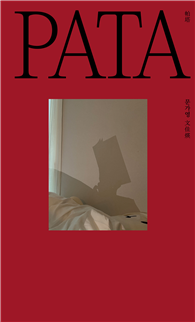In Screening Queer Memory, Anamarija Horvat examines how LGBTQ history has been represented on-screen, and interrogates the specificity of queer memory. She poses several questions: How are the pasts of LGBTQ people and communities visualised and commemorated on screen? How do these representations comment on the influence of film and television on the construction of queer memory? How do they present the passage of memory from one generation of LGBTQ people to another? Finally, which narratives of the queer past, particularly of the activist past, are being commemorated, and which obscured?
Horvat exemplifies how contemporary British and American cinema and television have commented on the specificity of queer memory - how they have reflected aspects of its construction, as well as participated in its creation. In doing so, she adds to an under-examined area of queer film and television research which has privileged concepts of nostalgia, history, temporality and the archive over memory. Films and television shows explored include Cheryl Dunye’s The Watermelon Woman (1996), Todd Haynes’ Velvet Goldmine (1998), Joey Soloway’s Transparent(2014-2019), Matthew Warchus’ Pride(2014) and Tom Rob Smith’s London Spy (2015).
| FindBook |
有 1 項符合
Screening Queer Memory: Lgbtq Pasts in Contemporary Film and Television的圖書 |
 |
Screening Queer Memory: Lgbtq Pasts in Contemporary Film and Television 作者:Horvat 出版社:Bloomsbury Academic 出版日期:2022-11-17 語言:英文 規格:平裝 / 240頁 / 普通級/ 初版 |
| 圖書館借閱 |
| 國家圖書館 | 全國圖書書目資訊網 | 國立公共資訊圖書館 | 電子書服務平台 | MetaCat 跨館整合查詢 |
| 臺北市立圖書館 | 新北市立圖書館 | 基隆市公共圖書館 | 桃園市立圖書館 | 新竹縣公共圖書館 |
| 苗栗縣立圖書館 | 臺中市立圖書館 | 彰化縣公共圖書館 | 南投縣文化局 | 雲林縣公共圖書館 |
| 嘉義縣圖書館 | 臺南市立圖書館 | 高雄市立圖書館 | 屏東縣公共圖書館 | 宜蘭縣公共圖書館 |
| 花蓮縣文化局 | 臺東縣文化處 |
|
|
圖書介紹 - 資料來源:博客來 評分:
圖書名稱:Screening Queer Memory: Lgbtq Pasts in Contemporary Film and Television
內容簡介
作者簡介
Anamarija Horvat is Postdoctoral Fellow at the Institute for Advanced Studies in the Humanities, University of Edinburgh, UK. Her work examines contemporary film and television, with a particular focus on LGBTQ representation and queer memory. Her research has been published in Feminist Media Studies and Critical Studies in Television, and in the Encyclopaedia of Gender, Media and Communication and the Oxford Encyclopaedia of Queer Studies and Communication. She is co-founder of the Queer Screens Network and co-chair of the NECS (European Network for Cinema and Media Studies) Queer and Feminist Workgroup.
|











